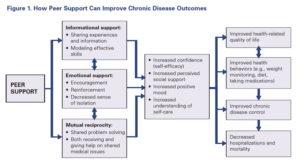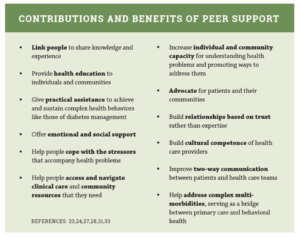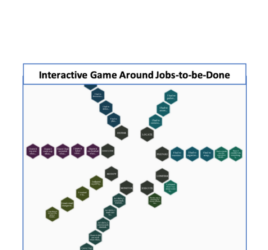
Peer-to-Peer Support Helps People Improve Their Chronic Condition Therapy Outcomes
The success of many therapies for chronic diseases depends in large part on the ability of patients to follow often-complicated self-care regimens. Patients face many challenges when attempting to implement these recommendations such as multiple co-morbidities, physical limitations, lack of resources, poor social support, lack of confidence or skills, and insufficient knowledge. It is not simply a lack of motivation, though this may play a part. Studies show that without sustained support many adults will not successfully manage their condition(s), leading to worse outcomes and increased use of healthcare resources.
One approach to supporting and empowering patients so that their chronic condition(s) health outcomes are optimized, is the use of peer support. This article gives some of the key components of successful peer-to-peer support.
What Are the Models of Peer Support?
A 2006 California Health Care Foundation (CHCF) paper – Building Peer Support Programs to Manage Chronic Disease1, defined models of peer support which included:
- Professional-led group visits with peer exchange in which patients with the same chronic disease who face similar self-management challenges meet with peers in a group led by a healthcare professional
- Peer-led self-management programs in which peers function as the educators and facilitators of group-based programs which can be delivered in-person groups, and via the telephone or the internet
- Peer coaches in which peers meet one-on-one with patients to listen, discuss concerns, and provide support
- Community health workers (or Promotoras) in which community members work as bridges between ethnic, cultural, and geographic communities and healthcare providers
- Support groups (or mutual help groups) in which people get together to share common experiences, situations, or problems and offer emotional and practical support
- Technology-enable peer support in which patients receive support from peers through regular communications (telephone, email, text, web) as either the full service or as part of other approaches
These approaches may each have their place in a comprehensive peer support program depending on circumstances and patient preferences.
How Does Peer Support Work?
The CHCF foundation paper1 also addressed how peer support works. The figure below shows the logic-model they created. The key inputs are informational support, emotional support, and mutual reciprocity. This leads to increased self-efficacy, perceived social support, positive mood, and understanding of self-care which ultimately leads to improved clinical and economic outcomes.

What Makes Peer Support Unique?
Some fundamental principles that make peer support distinct from other kinds of help include2 :
- Peer support does not necessarily assume a problem orientation. In spite of the fact that people might congregate around shared experiences, conversations do not have to focus on that experience.
- Assessments and evaluation are not part of relationships. Instead, people strive for mutual responsibility and communication that allows them to express their needs to each other without threat or coercion.
- Peer support does not utilize a medical framework. Instead the focus is on building relationships that support learning and growth across whole lives.
- Peer support assumes full reciprocity. There are no static roles of helper and helpee.
- Peer support requires people to embrace the emotional safety one feels though validation, being involved in compassionate relationships, having a place where you can be who you are, being provided the tools and education to be in mutually responsible peer relationships, feeling like you are not being judged, knowing that you’re not alone on your journey – that there are others that understand, and not feeling like you have to have all the answers.
What outcomes are seen with peer support programs?
Programs utilizing peers to support peers can provide effective and relatively inexpensive ways to improve outcomes and are therefore ideal ways for health systems to help patients manage their chronic diseases. The table below3, from an international study, lists some of the contributions and benefits of peer support.

Better Choices, Better Health® (BCBH)
Canary Health’s Better Choices, Better Health is a peer-to-peer, 6-week, digitally delivered self-management support intervention which successfully improves health and economic outcomes for adults with one or more chronic conditions. Participants increase their self-efficacy (confidence) such that they are better able to overcome barriers to successfully manage their lives and their condition(s). For more information, click here.
References:
1 Building Peer Support Programs to Manage Chronic Disease: Seven Models for Success; Michele Heisler, MD, MPA; prepared for California Healthcare Foundation; December 2006; Page 9 https://www.chcf.org/wp-content/uploads/2017/12/PDF-BuildingPeerSupportPrograms.pdf
2 Peer-Support: A Systemic-Approach; Shery Mead, Cheryl MacNeil: http://www.intentionalpeersupport.org/wp-content/uploads/2014/02/Peer-Support_A-Systemic-Approach.pdf
3 Global Evidence for Peer Support: Humanizing Health care; Report from and International Conference Hosted by Peers for Progress and the National Council of La Raza, Page 6 http://peersforprogress.org/pfp_headline/global-evidence-for-peer-support-humanizing-health-care/


